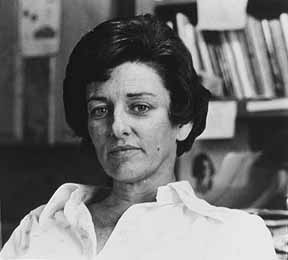Born in 1928, Anne Sexton was raised in Weston, Massachusetts. Her father was a successful businessman, and her childhood was materially comfortable. However, her relationship with her parents was problematic, perhaps even abusive. After attending a boarding school, she went to Garland Junior College, a “finishing school,” for a year. At age nineteen, she married Alfred “Kayo” Sexton II. While he was serving in Korea, she became a fashion model. At age twenty-five, after the birth of her first daughter, Anne suffered from post- partum depression, which led to her first breakdown, and she was admitted to a neuropsychiatric institution. Other hospitalizations followed. She continued to struggle with depression all her life before committing suicide at age forty-six.
During her treatment, however, her therapist encouraged her to write about what she was feeling, thinking, and dreaming. The therapist was impressed with her work and encouraged her to pursue this creative avenue. In 1957, Sexton began to participate in writing groups in Boston; these eventually led to forming friendships and other close relationships with the poets Robert Lowell, Maxine Kumin, George Starbuck, and Sylvia Plath. Her poems about her psychiatric struggles were published in her first book, To Bedlam and Part Way Back (1960); James Dickey wrote that they described the experiences “of madness and near-madness, of the pathetic, well-meaning, necessarily tentative and perilous attempts at cure, and of the patient’s slow coming back into the human associations and responsibilities which the old previous self still demands.”
Sexton’s work is generally categorized as confessional, together with that of poets like Plath, Lowell, John Berryman, and W. D. Snodgrass. In an interview with Patricia Marx, Sexton revealed, “…[E]veryone said, ‘You can’t write
this way. It’s too personal; it’s confessional; you can’t write this, Anne,’ and everyone was discouraging me. But then I saw Snodgrass doing what I was doing, and it kind of gave me permission.” Subsequent books included All
My Pretty Ones (1962), the Pulitzer Prize winner Live or Die (1966), Love
Poems (1969), and the 1969 play Mercy Street. Her least confessional and
most feminist volume was Transformations (1972), in which she retold several Grimm’s fairy tales. In an ironic twist, the last collection of her work published during her lifetime was entitled The Death Notebooks (1974). Posthumous volumes include The Awful Rowing Toward God (1975), 45 Mercy Street (1976), and Words for Dr. Y: Uncollected Poems with Three Stories (1978).
Sexton’s writings were extremely popular during her lifetime, and she received many accolades, including a Guggenheim Fellowship, grants from the Ford Foundation, and honorary degrees; she also held professorships at Boston University and Colgate University. Despite this literary recognition, critiques of her work usually focused on its autobiographical aspects. For instance, Dickey wrote of her poetry, “Miss Sexton’s work seems to me very little more than a kind of terribly serious and determinedly outspoken soap-opera.” In contrast, Beverly Fields contended that Sexton’s poetry is not as autobiographical as it seems; they are poems, not memoirs. Fields analyzed many of Sexton’s poems, pointing out the recurrent symbolic themes and the poetic techniques that in her view made these works so impressive.
Erica Jong, one of Sexton’s earliest champions, contended in her review of The Death Notebooks that Sexton’s artistic impact as a poet had been seriously underestimated: “She is an important poet not only because of her courage
in dealing with previously forbidden subjects, but because she can make the language sing. Of what does [her] artistry consist? Not just of her skill in writing traditional poems…. But by artistry, I mean something more subtle than the ability to write formal poems. I mean the artist’s sense of where her inspiration lies….There are many poets of great talent who never take that talent anywhere….They write poems which any number of people might have written. When Anne Sexton is at the top of her form, she writes a poem which no one else could have written.”
This excerpt is from The Book of Awesome Women Writers by Becca Anderson, which is available now through Amazon and Mango Media.





